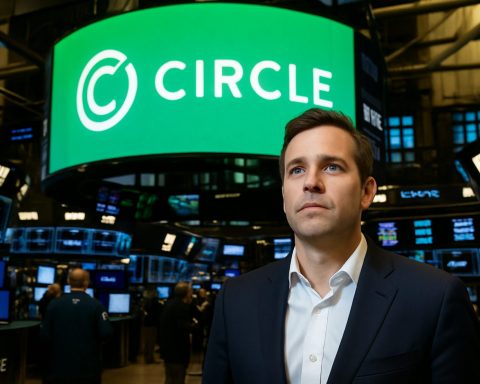- Visual storytelling and color psychology deeply influence user emotions, using hues to subtly convey trust, urgency, and passion.
- Typography sets the tone and mood of a website, with serif and sans-serif fonts suggesting elegance and clarity, respectively.
- Engaging content, including relatable stories and compelling narratives, serves as a powerful hook to captivate audiences.
- Algorithms personalize user experiences by tailoring content based on user behavior and preferences, encouraging longer visits.
- User Experience (UX) is central to effective web design, ensuring seamless navigation and interaction, enhancing user delight.
- Successful websites are the result of intentional design choices blending art and science to create captivating digital experiences.
Amidst the labyrinth of the internet, some websites ensnare you, drawing you in with an irresistible allure. What lies beyond their mesmerizing spell is an intricate dance of design and psychology, delicately crafted to engage even the most casual of visitors.
Visual Storytelling plays a pivotal role. Just as an artist carefully selects hues on a canvas, web designers choose colors that influence emotion subtly yet powerfully. Blues hint at trust and dependability, while reds and oranges ignite passion and urgency.
But the impact of typography shouldn’t be underestimated. Fonts, with their distinct personalities, convey tone and mood long before your mind registers the words. Serif fonts whisper elegance, whereas sans-serif types shout clarity and modernity.
Engagement isn’t purely about aesthetics, though. The content itself is a siren’s song. Stories that resonate with shared cultural experiences, compelling narratives that appeal to our innate curiosity, captivate audiences by promising value and entertainment.
Behind the scenes, a more technical ballet unfolds. Algorithms quietly analyze your behavior, learning your preferences and biases, then presenting content that aligns with these insights. This personalization crafts a unique experience for each user, increasing the likelihood of extended browsing and return visits.
Yet, at the heart of these captivating sites lies a singular philosophy: User Experience (UX). The architects of these digital realms meticulously study how users interact with every element, refining navigation to ensure seamless exploration. A well-designed interface acts as a gentle guide, removing obstacles and leaving the user enchanted.
The key takeaway? Masterfully designed websites don’t happen by accident. They are the result of deliberate choices, marrying art and science to create digital experiences that keep us coming back for more. In understanding them, we gain deeper insights into the digital spaces we inhabit and maybe, just maybe, learn to wield some of their magic for ourselves.
The Secrets Behind Irresistible Websites: How Design and Psychology Work Together
Creating an engaging website is an art form that involves a fusion of design, psychology, and technology to captivate and retain visitors. Let’s dive deeper into the elements and strategies that make websites truly compelling, beyond what was initially explored.
Visual Storytelling: The Power of Color and Imagery
– Color Psychology: Successful websites utilize color to evoke specific emotions. For instance:
– Blue is often used by financial institutions and tech companies to convey trustworthiness.
– Red can stimulate excitement or urgency, making it a popular choice for sales banners or call-to-action buttons.
– Green is frequently associated with health and wellness, representing growth and tranquility.
– Imagery and Graphics: High-quality images can instantly communicate ideas and feelings. Use of imagery in strategic locations helps maintain visual interest and can lead to increased dwell times.
Typography: More Than Just Words
– Font Selection: Choosing the right font is critical. Serif fonts like Times New Roman are traditionally seen as more formal, ideal for editorial content. Sans-serif fonts like Arial or Helvetica provide a modern, clean appearance.
– Readability and Scannability: Spacing, line height, and text alignment are vital for readability. Websites structured with clear headings and bullet points improve scannability, allowing users to skim content effectively.
How to Enhance User Engagement
1. Storytelling: Craft narratives that resonate with your target audience. Use relatable characters and scenarios to draw readers in emotionally.
2. Interactive Content: Incorporate quizzes, polls, and interactive infographics to enhance user engagement and keep visitors on the page longer.
Real-World Use Cases
– E-commerce: Personalized product recommendations boost sales by using algorithms to analyze user behavior and suggest items of interest.
– News Websites: Dynamic, engaging layouts with timely content updates can encourage daily visits and increased time on-site.
Market Forecasts & Trends
– AI in Web Design: Expect AI to further revolutionize user personalization, with machine learning providing ever-greater customization of user experiences.
– Mobile-First Design: As mobile browsing continues to surpass desktop usage, responsive design that prioritizes mobile experiences will be crucial.
Reviews & Comparisons
– Website Builders: Tools like Wix, Squarespace, and WordPress allow novices to create visually stunning websites with little technical skill.
– SEO Optimization Tools: Platforms such as Semrush and Ahrefs offer features to enhance website visibility and traffic.
Controversies & Limitations
– Data Privacy Concerns: As websites become more personalized, data privacy becomes a significant concern. Adherence to GDPR and other data protection regulations is essential.
– Design Over Function: Occasionally, a focus on aesthetic appeal can detract from usability, leading to user frustration.
Actionable Recommendations
– Focus on User Experience: Ensure your website’s navigation is intuitive and reduces the number of clicks needed to reach key information.
– Optimize for Speed: Fast loading times are non-negotiable. Use resources like Google PageSpeed Insights to assess and improve performance.
– Create Engaging Calls to Action: Use compelling language and visual cues to guide users towards desired actions, such as signing up or purchasing.
Quick Tips
– Regularly update content to keep it fresh and relevant.
– Incorporate user feedback loops to continually enhance UX and design elements.
For detailed insights and resources to improve your online presence, check out HubSpot or Canva. These platforms offer valuable tools and guidance for both design and marketing strategies.








